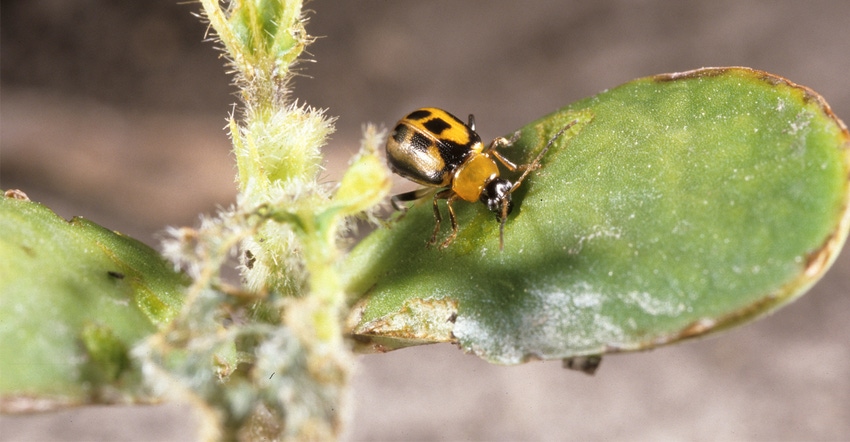
You likely saw mixed reports this winter about whether you could skip a soybean insecticide seed treatment or not. If you decided not to include one to save costs, will there be consequences? Should you start scouting earlier than usual? What should you be looking for, and what can you do if you find it?
The Indiana Certified Crop Advisers panel addresses these questions this month. The panel includes Jesse Grogan, agronomist, LG Seeds, Lafayette; Greg Kneubuhler, crops consultant and owner of G&K Concepts, Harlan; and Tom Stein, manager of the Templeton and Boswell branches for Ceres Solutions LLC.
Grogan: Look for adult bean leaf beetles in the earliest soybean fields planted. Bean leaf beetles overwinter in the adult stage along edges of fields and congregate in early planted fields in the area. An insecticide treatment would be needed if beetle populations reach a treatment threshold. The treatment threshold varies based upon the price of soybeans and the total cost of the application, which includes the pesticide plus application cost. Check out this Purdue University resource for information on treatment thresholds.
Kneubuhler: Soybean insecticide seed treatments on the basic side help control bean leaf beetles and early season soybean aphids. The first to scout for are bean leaf beetles. They typically aren’t an issue early in the season but can be worth treating if they show up in significant numbers. Typically, they start defoliating soybeans as early as the cotyledon stage, but usually their pressure is later in the season. The next generation will be pod feeders. Pod feeding is where the most yield reduction is caused. Early-season aphids can be scouted, but they generally don’t reach treatment thresholds until the reproductive stage of soybeans — if they reach thresholds at all in your area.
Stein: You need to begin scouting right away in this situation because several soybean insects begin feeding in April. That assumes you can plant soybeans in mid- to late April. Look for foliage feeding on unifoliates, cotyledons, emerging trifoliates and stems caused by bean leaf beetles, cutworms and Mexican bean beetles. Pay attention to damage done to the growing point.
Grogan: Insects that reduce plant stands like seed corn maggot and wireworms can’t be controlled by aboveground insecticide treatments. Replanting is required where stands are reduced below acceptable levels by these pests.
Kneubuhler: The higher-end seed-applied insecticides offer protection for pests such cyst nematodes, white grubs and wireworms. In-season treatment options for these pests can be variable in control, costly or not available.
Stein: Belowground pests can cause damage to soybean plants, as well. Look for stunted, wilted plants resulting from wireworms and white grub damage. Seed corn maggots can cause a reduction in stand. Since there are no rescue treatments for belowground pests such as wireworms, seed corn maggots and white grubs, replanting may be your only option.
About the Author(s)
You May Also Like




